2 Standards, definitions and books
2.1 Standards
Quality standards and references

.jpg) The ISO 9000 family of standards contains three core booklets (and one guideline):
The ISO 9000 family of standards contains three core booklets (and one guideline):
- ISO 9000 (2015): Quality management systems. Fundamentals and vocabulary
- ISO 9001 (2015): Quality management systems. Requirements
- ISO/TS 9002 (2016): Quality management systems - Guidelines for the application of ISO 9001:2015
- ISO 9004 (2018): Quality management - Quality of an organization - Guidance to achieve sustained success
In addition to ISO 19443 in 2020 was published the guide for application:
ISO TR 4450 - Quality management systems — Guidance for the application of ISO 19443:2018
Safety standards, Nuclear Security series, Nuclear Energy series, Technical documents, Booklets, Reports, Treaties, Conventions and many others are available on the IAEA web site.
IAEA requirements are included in numerous codes and standards in technical fields like Mechanical, Electrical, Civil Engineering, fuel design, etc…
Some other standards and documents related to nuclear safety:
21 FR 355, Atomic Energy Commission, Federal Register, 1956
IAEI-50-C-QA, Quality Assurance for Safety in Nuclear Power Plants, A code of Practice, IAEI, 1978
MIL-P-1629A, Procedures for Performing a Failure Mode Effect and Critical Analysis, US DoD, 1980
Decree of 10 August 1984, Order of 10 August 1984 relating to the quality of the design, construction and operation of basic nuclear installations, French laws, 1984
75-INSAG-4, Safety culture - safety series - A report by the International Nuclear Safety Advisory Group, IAEA, 1991
TECDOC-1169, Managing suspect and counterfeit items in the nuclear industry, IAEA, 2000
GS-R-3 IAEA, The management system for facilities and activities, Safety requirements, IAEA, 2006
SF-1, Fundamental safety principles, IAEA, 2006
NQA – 1, Nuclear Quality Assurance - Quality Assurance Requirements for Nuclear Facility Applications, ASME, 2008
S-G-3.5, The management system for nuclear installation, IAEA, 2009
NSQ-100, Nuclear Safety and Quality Management System Requirements, NQSA, 2010
DOE O 450.2, Integrated Safety Management, US Department of Energy, 2011
DOE P 450.4A, Integrated Safety Management Policy, US Department of Energy, 2011
DOE G 450.4-1C, Integrated Safety Management System Guide, US Department of Energy, 2011
Guidance for commercial grade dedication, US Department of energy, 2011
GSR-3, Radiation Protection and Safety of Radiation Sources: International Basic Safety Standards, IAEA, 2011
INSAG-25, A Framework for an Integrated Risk Informed Decision Making Process, IAEA, 2011
Decree of 7 February 2012, Order of February 7, 2012 establishing the general rules relating to basic nuclear installations (BNI), French laws, 2012
DOE G 440.1-1B, Chg 1 (Admin Chg) - Worker Safety and Health Program for DOE (Including the National Nuclear Security Administration) Federal and Contractor Employees, US Department of Energy, 2013
Report, Safety of new NPP designs, WENRA, 2013
DOE G 414.1-2B, Chg 2 (Admin Chg) - Quality Assurance Program Guide, US Department of Energy, 2013
Principles PL | 2013-1, Traits of a Healthy Nuclear Safety Culture, WANO, 2013
TECDOC-1756, Root Cause Analysis Following an Event at a Nuclear Installation: Reference Manual, IAEA, 2015
DOE G 413.3-2, Chg 1 (Admin Chg) - Quality Assurance Guide for Project Management, US Department of Energy, 2015
ASME STP-NU-061-1, Comprehensive evaluation of the nsq-100 nuclear safety and quality management system requirements, ASME, 2015
ISO 14001, Environmental management systems - requirements with guidance for use, ISO, 2015
DOE M 441.1-1, Chg 1 (Admin Chg) - Nuclear Material Packaging, US Department of Energy, 2016
SSR-2/1 Safety of nuclear power plants, Design – Specific safety requirements, IAEA, 2016.
GSR Part 2, General safety requirements – Leadership and management for safety, IAEA, 2016
DOE-STD-1189-2016, Integration of Safety into the Design Process, US Department of Energy, 2016
IATF 16949, Quality management system requirements for automotive production and relevant service parts organizations, AIAG, 2016
AS9100, Quality Management Systems – Requirements for Aviation, Space and Defense Organizations, IAQG, 2016
NP-T-3.21, Procurement engineering and supply chain guidelines in support of operation and maintenance of nuclear facilities, IAEA, 2016
DOE O 450.2, Chg 1 (MinChg) - Integrated Safety Management, US Department of Energy, 2017
REGULATORY GUIDE 1.164, Dedication of Commercial-Grade Items for Use in Nuclear Power Plants, U.S. Nuclear regulatory commission, 2017
SSG-50, Operating Experience Feedback for Nuclear Installations, Specific Safety Guide, IAEA, 2018
ISO 31000, Risk management – Guidelines, ISO, 2018
ISO 19011, Guidelines for auditing management systems, ISO, 2018
Def Stan 05-135 Part 2, Avoidance of Counterfeit Materiel, UK Defence Standardization, 2019
NP-T-3.26, Managing Counterfeit and Fraudulent Items in the Nuclear Industry, IAEA, 2019
IEC 31010:2019, Risk management — Risk assessment techniques, ISO, 2019
A Harmonized Safety Culture Model, IAEA, 2020
NG‑T‑1.6, Management of nuclear power plant projects, IAEA, 2020
TECDOC-1910, Quality assurance and quality control in nuclear facilities and activities good practices and lessons learned, IAEA, 2020
Guide de l'ASN n°34, Implementation of regulatory requirements applicable to internal transport operations, ASN, 2021
Report, Safety Reference Levels for Existing Reactors 2020, WENRA, 2021
DOE G 413.3-7A, Chg 2 (LtdChg) - Risk Management Guide, US Department of Energy, 2021
DOE M 435.1-1, Chg 3 (LtdChg) - Radioactive Waste Management Manual, US Department of Energy, 2021
MIL-STD-882E, System Safety, Standard Practice, US DoD, 2023
DOE O 426.2A, Chg 1 (AdminChg), Personnel Selection, Training, Qualification, and Certification Requirements for DOE Nuclear Facilities, US Department of Energy, 2024
DOE O 205.1D, Department of Energy Cybersecurity Program, US Department of Energy, 2024
NRC Regulations Title 10, Code of Federal Regulations, USNRC, 2025
TE-1740, Use of a Graded Approach in the Application of Systematic Approach to Training for Facilities and Activities, IAEA, 2025
Many ISO standards are created in dozens of subjects such as:
Nuclear energy, nuclear technologies, radiation protection, reactor technology, radioactivity measurements, protection against ionizing radiation, nuclear installations, processes and technologies, measurement of radioactivity in the environment, radiation protection in medical environments.
The standards of the series ISO 10001 to ISO 10019 are guidelines for quality management systems and will help you find many answers (cf. ISO 9001:2015, annex B).
More than 28,000 standards (in English and other languages) are available on the Public.Resource.Org site.
The Oxebridge Q001 is a user-friendly, open sources remix of ISO 9001:2015.
Some nuclear-related web sites:
AFCEN - Association Française pour les règles de Conception, de Construction et de surveillance en Exploitation des chaudières électroNucléaires (French Association for the Rules of Design, Construction and
Monitoring in Operation of Electro-Nuclear Boilers)
ANSI – American National Standards Institute
ASNR - Autorité de sûreté nucléaire et de radioprotection (The Nuclear Safety and Radiation Protection Authority), France
ASME - American Society of Mechanical Engineers
BSI – British Standards Institute
CQI – Chartered Quality Institute
EDSTAR - European Defence Standards Reference System
ENSREG - European Nuclear Safety Regulators Group
EPRI - Electric Power Research Institute
EURATOM - European Atomic Energy Community
FAA - Federal Aviation Administration
IAEA - International Atomic Energy Agency
IAQG - International Aerospace Quality Group
ICSI – Institute for an Industrial Safety Culture
INPO - Institute of Nuclear Power Operations
NEA – Nuclear Energy Agency
NEI - Nuclear Energy Institute
NI – Nuclear Institute
NIA - Nuclear Industries Association
NQSA - Nuclear Quality Standard Association
NUCLEAREUROPE – Nuclear Europe
ONR – Office for Nuclear Regulation
USDOE - US Department of Energy
USNRC – United States Nuclear Regulatory Commission
WANO - World Association of Nuclear Operators
WENRA - Western European Nuclear Regulators Association
WINS - World Institute for Nuclear Safety
WNA – World Nuclear Association
2.2 Definitions
Terms and definitions related to quality and nuclear safety

The beginning of wisdom is the definition of terms. Socrates
Specific qualityaptitude to fulfill requirements (see also ISO 9000, 3.6.2) and nuclear safetyachievement of proper operating conditions, prevention of accidents and mitigation of accident consequences, resulting in protection of workers, the public and the environment from undue radiation risks (IAEA) terms:
CFS: counterfeit, fraudulent or suspect (item)
Competence: personal skills, knowledge and experiences
Conformity: fulfillment of a specified requirement
Corrective action: action to eliminate the causes of nonconformity or any other undesirable event and to prevent their recurrence
Customer: anyone who receives a product
Customer satisfaction: top priority objective of every quality management system related to the satisfaction of customer requirements
Document: any support allowing the treatment of information
Effectiveness: capacity to realize planned activities with minimum effort
Efficiency: financial relationship between achieved results and used resources
External provider (supplier): an entity that provides a product
Graded approach: activities employed to ensure that the application of requirements is commensurate with nuclear safety significance
ITNS: important to nuclear safety
Indicator: value of a parameter, associated with an objective, allowing the objective measure of its effectiveness
Management system: set of processes allowing objectives to be achieved
Nonconformity: fnon-fulfillment of a specified requirement
Nuclear safety: fachievement of proper operating conditions, prevention of accidents and mitigation of accident consequences, resulting in protection of workers, the public and the environment from undue radiation risks (IAEA Safety glossary)
Organization (company): a structure that satisfies a need
Process: activities that transform inputs into outputs
Product (or service): every result of a process or activity
Quality: aptitude to fulfill requirements
Quality management: activities allowing the control of an organization with regard to quality
QSMS: quality and safety management system
Quality objective: related to quality, measurable goal that must be achieved
Requirement: explicit or implicit need or expectation
Risk: likelihood of occurrence of a threat or an opportunity
RCA: root cause analysis
Safety culture: protection and safety issues receive the attention warranted by their significance as an overriding priority
Stakeholder: person, group or company that can affect or be affecteded by an organization
Top management: group or persons in charge of the company's control at the highest level
In the terminology of quality and safety management systems, do not confuse:
- accident and incident
- an accident is an unexpected serious event
- an incident is an event that can lead to an accident
- anomaly, defect, dysfunction, failure, nonconformity, reject and waste:
- anomaly is a deviation from what is expected
- defect is the non-fulfillment of a requirement related to an intended use
- dysfunction is a degraded function that can lead to a failure
- failure is when a function has become unfit
- nonconformity is the non-fulfillment of a requirement in production
- reject is a nonconforming product that will be destroyed
- waste is when there are added costs but no value
- audit program and plan
- an audit program is the annual planning of the audits
- an audit plan is the description of the audit activities
- audit, inspection, auditee and auditor
- an audit is the process of obtaining audit evidence
- an inspection is the conformity verification of a process and product
- an auditee is the one who is audited
- an auditor is the one who conducts the audit
- control and optimize
- control is meeting the objectives
- optimize is searching for the best possible results
- customer, external provider and subcontractor
- a customer receives a product
- an external provider provides a service or a product
- a subcontractor provides a product or service on which specific work is done
- effectiveness and efficiency
- effectiveness is the level of achievement of planned results
- efficiency is the ratio between results and resources
- follow-up and review
- follow-up is the verification of the obtained results of an action
- review is the analysis of the effectiveness in achieving objectives
- inform and communicate
- to inform is to give someone meaningful data
- to communicate is to pass on a message, to listen to the reaction and discuss
- objective and indicator
- an objective is a sought after commitment
- an indicator is the information on the difference between the pre-set objective and the achieved result
- organization and enterprise, society, company
- organization is the term used by the ISO 9001 standard as the entity between the supplier and the customer
- an enterprise, society and company are examples of organizations
- process, procedure, product, activity and task
- a process is how we satisfy the customer using people to achieve the objectives
- a procedure is the description of how we should conform to the rules
- a product is the result of a process
- an activity is a set of tasks
- a task is a sequence of simple operations
Remark 1: the use of ISO 9000, ISO 19443 and IAEA Safety glossary definitions is recommended. The most important thing is to determinate a common and unequivocal vocabulary for everyone in the company.
Remark 2: as quality and nuclear safety cannot be separated, our preference is for quality and safety manager and quality and safety management system (QSMS).
Remark 3: the customer can also be the user, the beneficiary, the trigger, the ordering party, the consumer.
Remark 4: documented information is any information that we must maintain (procedure .gif) ) or retain (record
) or retain (record .gif) )
)
For other definitions, comments, explanations and interpretations that you don’t find in this module and annex 06, you can consult: .jpg)

- IAEA Safety glossary (2018)
- ISO Online Browsing platform (OBP)
- IEC Electropedia
- ISO 9000: 2015 - Quality management systems. Fundamentals and vocabulary, (2015)
2.3 Books
Books related to quality and nuclear safety

.jpg) Books for further reading on quality and nuclear safety:
Books for further reading on quality and nuclear safety:
.jpg) Philip Crosby, Quality is free; the Art of Making Quality Certain, McGraw-Hill, 1979
Philip Crosby, Quality is free; the Art of Making Quality Certain, McGraw-Hill, 1979- Joseph Juran, Management of Quality, McGraw-Hill, 1981
.jpg) Kaoru Ishikawa, What is Total Quality Control, The Japanese Way, Prentice-Hall, 1981
Kaoru Ishikawa, What is Total Quality Control, The Japanese Way, Prentice-Hall, 1981.jpg) Edwards Deming, Out of the Crisis, MIT Press, 1982
Edwards Deming, Out of the Crisis, MIT Press, 1982(1).jpg) Eliyahu Goldratt, Jeff Cox, The Goal, A Process of Ongoing Improvement, North River Press, 1984
Eliyahu Goldratt, Jeff Cox, The Goal, A Process of Ongoing Improvement, North River Press, 1984.jpg) Masaaki Imai, KAIZEN, The Key to Japan’s Competitive Success, McGraw-Hill, 1986
Masaaki Imai, KAIZEN, The Key to Japan’s Competitive Success, McGraw-Hill, 1986(1).jpg) James Harrington, Poor-Quality Cost, Dekker, 1987
James Harrington, Poor-Quality Cost, Dekker, 1987(2).jpg) Larry Webber, Michael Wallace, Quality Control for Dummies, Wiley, 2007
Larry Webber, Michael Wallace, Quality Control for Dummies, Wiley, 2007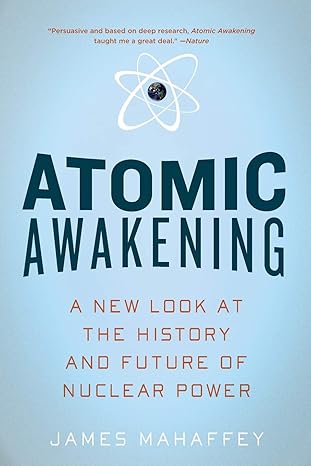 James Mahaffey, Atomic Awakening: A New Look At The History And Future Of Nuclear Power, Pegasus, 2010
James Mahaffey, Atomic Awakening: A New Look At The History And Future Of Nuclear Power, Pegasus, 2010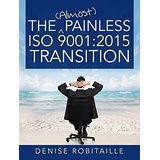 Denise Robitaille, The (Almost) Painless ISO 9001:2015 Transition, Paton Professional, 2015
Denise Robitaille, The (Almost) Painless ISO 9001:2015 Transition, Paton Professional, 2015 Jan Gillet, Implementing Iso 9001:2015: Thrill your customers and transform your cost base with the new gold standard for business management, Infinite Ideas, 2015
Jan Gillet, Implementing Iso 9001:2015: Thrill your customers and transform your cost base with the new gold standard for business management, Infinite Ideas, 2015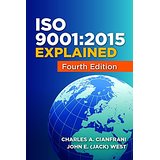 Charles Cianfrani, John West, ISO 9001:2015 Explained, ASQ Quality Press, 2015
Charles Cianfrani, John West, ISO 9001:2015 Explained, ASQ Quality Press, 2015 Craig Cochran, ISO 9001:2015 in Plain English, Paton Professional, 2015
Craig Cochran, ISO 9001:2015 in Plain English, Paton Professional, 2015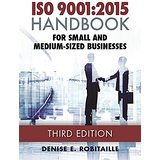 Denise Robitaille, ISO 9001:2015 Handbook for Small and Medium-Sized Businesses, Quality Press, 2016
Denise Robitaille, ISO 9001:2015 Handbook for Small and Medium-Sized Businesses, Quality Press, 2016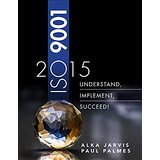 Alka Jarvis, Paul Palmes, ISO 9001: 2015: Understand, Implement, Succeed!, Prentice hall, 2016
Alka Jarvis, Paul Palmes, ISO 9001: 2015: Understand, Implement, Succeed!, Prentice hall, 2016 Christopher Paris, Surviving ISO 9001: 2015, Oxebridge Quality Press, 2016
Christopher Paris, Surviving ISO 9001: 2015, Oxebridge Quality Press, 2016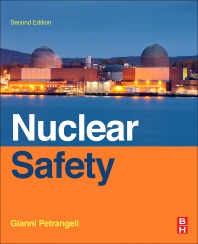 Gianni Petrangeli, Nuclear Safety, Elsevier, 2019
Gianni Petrangeli, Nuclear Safety, Elsevier, 2019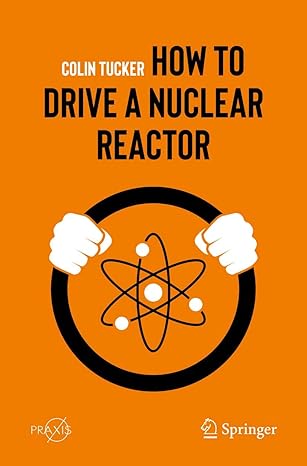 Colin Tucker, How to Drive a Nuclear Reactor, Popular Science, 2020
Colin Tucker, How to Drive a Nuclear Reactor, Popular Science, 2020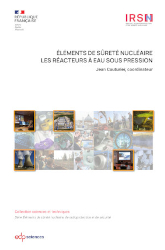 Jean Couturier, Éléments de sûreté nucléaire - Les réacteurs à eau sous pression, (Nuclear Safety Elements - Pressurized Water Reactors), Collection sciences et techniques, 2020 (only in French)
Jean Couturier, Éléments de sûreté nucléaire - Les réacteurs à eau sous pression, (Nuclear Safety Elements - Pressurized Water Reactors), Collection sciences et techniques, 2020 (only in French)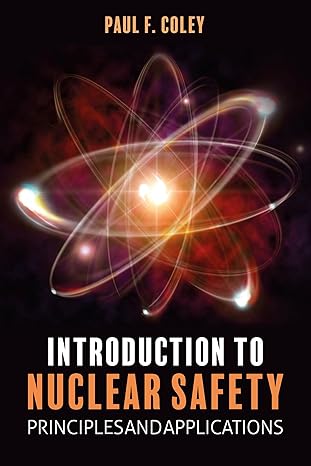 Paul Coley, Introduction to Nuclear Safety, Whittles Publishing, 2024
Paul Coley, Introduction to Nuclear Safety, Whittles Publishing, 2024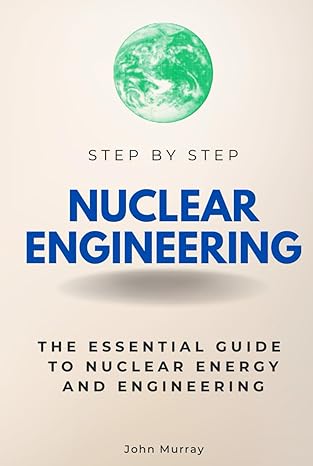 John Murray, Nuclear Engineering Step by Step: The Essential Guide to Nuclear Energy and Engineering, Step By Step Subject Guides, 2024
John Murray, Nuclear Engineering Step by Step: The Essential Guide to Nuclear Energy and Engineering, Step By Step Subject Guides, 2024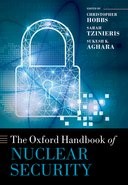 Christopher Hobbs et al, The Oxford Handbook of Nuclear Security, Oxford University Press, 2024
Christopher Hobbs et al, The Oxford Handbook of Nuclear Security, Oxford University Press, 2024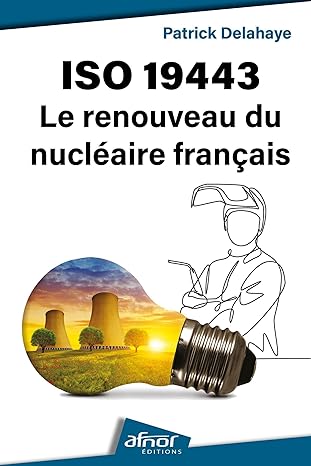 Patrick Delahaye, ISO 19443 : Le renouveau du nucléaire français (ISO 19443: The revival of French nuclear power), AFNOR, 2024 (only in French)
Patrick Delahaye, ISO 19443 : Le renouveau du nucléaire français (ISO 19443: The revival of French nuclear power), AFNOR, 2024 (only in French)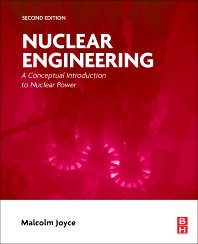 Malcolm Joyce, Nuclear Engineering: A Conceptual Introduction to Nuclear Power, Elsevier, 2025
Malcolm Joyce, Nuclear Engineering: A Conceptual Introduction to Nuclear Power, Elsevier, 2025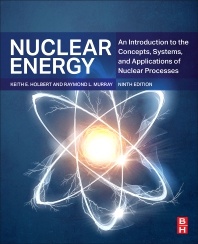 Raymond Murray, Keith Holbert, Nuclear Energy: An Introduction to the Concepts, Systems, and Applications of Nuclear Processes, Elsevier, 2025
Raymond Murray, Keith Holbert, Nuclear Energy: An Introduction to the Concepts, Systems, and Applications of Nuclear Processes, Elsevier, 2025
.jpg) Minute of relaxation. Game: Procedure
Minute of relaxation. Game: Procedure
When I think of all the books still left for me to read, I am certain of further happiness. Jules Renard
